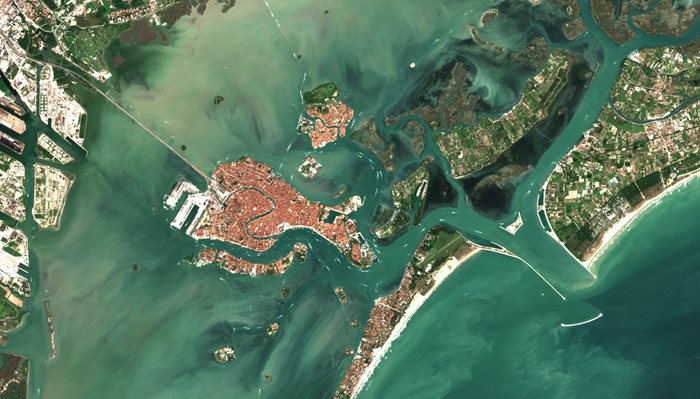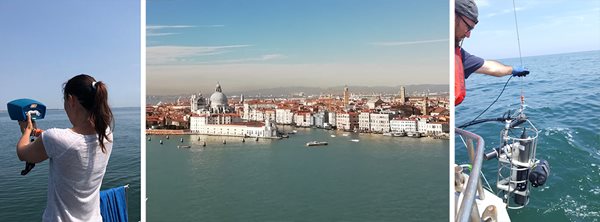The Venice lagoon, located in the Northern Adriatic Sea, is a complex transitional ecosystem under pressure from human and global environmental factors. With a total surface of approximately 550 km2 and mean depth of 1 metre, this system contains a diverse range of habitats including navigable and minor channels, salt marshes, tidal flats and islands. Like all shallow water transitional areas, the Venice Lagoon is a constantly evolving environment, where the exchanges at the tidal inlets drive biogeochemical and morphological evolution. As both a site of historical interest and environmental importance, thoughtful management of the Venice Lagoon is needed amidst changing conditions driven by climate change, pollution, invasive species and other global pressures.
CERTO in the Venice Lagoon
CERTO has advanced water quality monitoring in the Venice Lagoon by developing customised satellite-derived products and indicators tailored to this unique ecosystem. In situ data collected during the project validated new indicators of chlorophyll-a concentrations and phytoplankton bloom timing and intensity. These CERTO tools help meet the needs of local stakeholders and support EU environmental policy objectives, including ecological assessments for the Water Framework Directive and Marine Strategy Framework Directive reporting.
Specifically, two key CERTO indicators were developed - the chlorophyll-a 90th percentile as an indicator of peak phytoplankton biomass, and phytoplankton bloom phenology related to bloom frequency and intensity.
The project also contributes to knowledge of suspended sediment transport at the lagoon-sea inlets, a critical process for safeguarding lagoon morphology and functionality. Moreover, CERTO supports monitoring activities for Good Environmental Status assessment, and improves eutrophication indices and phytoplankton phenology tracking, considering spatio-temporal variability in environmental and human-induced parameters.
 Sentinel 2 satellite image of the Venice Lagoon.
Sentinel 2 satellite image of the Venice Lagoon.

Thirteen fieldwork activities were carried out in Venice Lagoon and adjacent coastal waters for the period February-September 2020. About 90 sampling stations were visited synchronously to Sentinel-2 and Landsat 8 overpasses, collecting above-water reflectance, CTD and turbidity profiles, Secchi disk depth, water sampling for total suspended matter and chlorophyll-a concentrations.